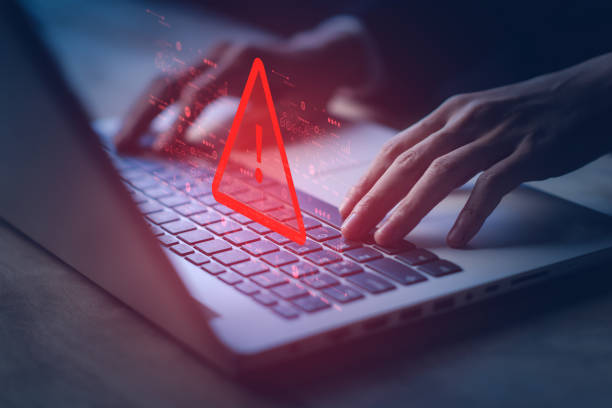How Businesses Can Effectively Handle Security Incidents and Achieve Compliance
In an era where cyber threats are not a matter of if, but when, businesses are challenged to navigate the complex waters of incident response while ensuring they meet stringent compliance standards. This guide delves into practical strategies for managing security incidents in line with ISO 27001, showcasing how organizations can fortify their defenses and maintain compliance.
Understanding Security Incidents
A security incident can disrupt operations, expose sensitive data, or even compromise the integrity of business processes. From malware attacks to insider threats, each incident demands a specific approach, tailored to both mitigate immediate risks and prevent future occurrences.
Incident Management: The ISO 27001 Approach
Preparation
- Policy and Procedures: Develop an incident management policy aligned with ISO 27001 incident management solutions. This policy should detail incident classification, response team roles, and escalation procedures.
- Training: Equip your team with the knowledge to detect, respond to, and report incidents. Training should cover ISO 27001 certification requirements to ensure staff actions support compliance.
Detection and Reporting
- Monitoring Tools: Leverage technology to detect incidents early. Security Information and Event Management (SIEM) systems can be instrumental here.
- Incident Logging: Maintain a log of all incidents, including minor ones, to track patterns and improve response strategies.
Response
- Containment: Act swiftly to isolate affected systems or networks. This might involve disconnecting devices or rerouting traffic.
- Eradication: Identify and eliminate the root cause of the incident. This could mean patching vulnerabilities, deleting malicious software, or changing compromised credentials.
- Recovery: Use secure, tested backups to restore services, ensuring no residual threats remain.
Post-Incident Activities
- Analysis: Dissect the incident to understand its nature, cause, and impact. This step is crucial for compliance documentation.
- Documentation: Keep detailed records of each phase of the incident for audit purposes and to inform future policy.
The Importance of a Cybersecurity Culture in Incident Management
Beyond technical measures and compliance checklists, fostering a strong cybersecurity culture within an organization is essential for effective incident management. Employees, regardless of their role, are often the first line of defense against cyber threats. However, without a culture that prioritizes security awareness and proactive engagement, even the most advanced security frameworks can fall short.
A security-conscious culture starts with executive leadership. When company leaders actively support and participate in cybersecurity initiatives, it sets a precedent for the entire organization. Regular training sessions tailored to different roles—ranging from IT specialists to customer service representatives—help ensure that every employee understands their responsibilities in identifying and reporting threats. Simulated phishing tests, real-world attack case studies, and cross-departmental security drills can reinforce best practices.
Additionally, a clear and open communication channel for reporting incidents without fear of blame is crucial. Employees must feel comfortable reporting suspicious activities, even if they turn out to be false alarms. Encouraging a mindset of “see something, say something” can prevent minor security lapses from escalating into full-blown breaches.
Organizations that embed cybersecurity into their daily operations—rather than treating it as an IT-exclusive function—can respond to incidents faster, mitigate risks more effectively, and maintain compliance with standards like ISO 27001. A complete guide to it should help you understand better. By prioritizing security culture, businesses not only strengthen their defenses but also enhance their ability to recover from incidents with minimal disruption.
Achieving and Maintaining Compliance
ISO 27001 Certification
- Risk Assessment: Conduct periodic risk assessments to identify new threats and compliance gaps, adhering to ISO 27001 standards.
- Control Implementation: Apply controls that not only protect but also align with ISO 27001 requirements for information security management.
- Audit: Regular audits are key to maintaining certification. Both internal reviews and external audits ensure ongoing compliance.
Tools and Services
- Utilize various platforms that provide specialized ISO 27001 incident management solutions - cyberupgrade.net is one of them, assisting with compliance in ICT audits and security incident management.
Case Study Example
A financial services company faced a sophisticated phishing attack. Their ISO 27001-aligned incident response included:
- Immediate containment by blocking the phishing domain.
- Eradication through a thorough review and strengthening of email security policies.
- Recovery with the help of secure backups and system checks.
- Post-incident analysis led to staff retraining and an update to their ISO 27001 compliance documentation.
Best Practices for Businesses
- Proactive Communication: Maintain open lines with all stakeholders, including regulatory bodies, to uphold transparency and trust.
- Continuous Improvement: Treat each incident as an educational experience, leading to policy and procedure updates.
- Legal Considerations: Stay abreast of data protection laws like GDPR or CCPA, which can influence how incidents are managed and reported.
Integrating Incident Management with Business Continuity
- Business Impact Analysis: Understand how security incidents affect business operations to better tailor your response and recovery strategies.
- Crisis Communication Plan: Have a prepped communication strategy that integrates with incident response to manage public perception and internal communications.
Leveraging Technology for Compliance
- Automation: Use automated tools for compliance checks and incident logging to reduce human error and increase efficiency.
- AI and Machine Learning: These technologies can predict potential vulnerabilities or detect unusual activities that might go unnoticed, aiding in both incident management and compliance.
The Role of SmartScanner in Incident Management
A crucial step in preventing security incidents is identifying vulnerabilities before they are exploited. SmartScanner, a comprehensive web vulnerability scanner, helps businesses detect security flaws such as SQL injection, cross-site scripting, and OWASP Top 10 risks. By integrating regular scans with SmartScanner, businesses can proactively strengthen their defenses, reduce security gaps, and maintain compliance with industry standards like ISO 27001. Incorporating vulnerability scanning into an incident management strategy enhances early threat detection, ensuring faster responses and improved security resilience.
By weaving these strategies into the fabric of your organization, security incident management becomes not only reactive but also a strategic component of your overall business resilience and compliance posture.

Vytautas Nemunaitis
Vytautas Nemunaitis is an Lithuania SEO expert, more than 10+ years of experience.
